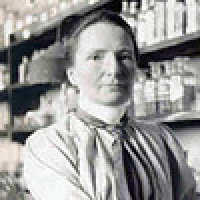Frances Micklethwait facts for kids
Quick facts for kids
Frances Mary Gore Micklethwait
|
|
|---|---|
 |
|
| Born | 1867 Blackwood, Yorkshire, England
|
| Died | 25 March 1950 |
| Nationality | British |
| Alma mater | Royal college of science, later known as Imperial College |
| Awards | MBE for secret wartime work |
| Scientific career | |
| Fields | Wartime research chemist |
Frances Mary Gore Micklethwait (born 1867, died 1950) was a brave English scientist. She was one of the first to study mustard gas during World War I. Mustard gas was a dangerous chemical weapon. Frances worked to find a way to protect people from it. She even received an award (an MBE) for her secret work. Her important contributions are now known.
Contents
Early Life and Education
Frances Micklethwait was born in Blackwood, Yorkshire, England. Her father was a farmer, and her mother was from Paris. She was the first daughter in her family.
Frances studied at home for a while. Later, she went to the Swanley Horticultural College in Kent. This college started letting women study there in 1897. In 1898, Frances joined the Royal College of Science. This college is now known as Imperial College. She earned her degree there in 1901.
Important Pre-War Chemistry Research
After finishing her degree, Frances Micklethwait did a lot of research. She focused on organic chemistry. This is a part of chemistry that studies carbon-based compounds. It was a new and very important area of science.
From 1901 to 1912, she worked with a scientist named G. T. Morgan. She even won a special award called a Beit Research Fellowship. This award was for her excellent work. Frances and G. T. Morgan wrote 22 research papers together. This made her one of the most active female chemists of her time.
Secret Wartime Research
Frances Micklethwait received an award called an MBE. Officially, it was for her work as a 'Chemical Supply Officer.' But her most important work was top secret. She joined a research team at Imperial College during World War I. This team studied chemical weapons.
Frances was one of the first to study mustard gas. This gas was very dangerous because it was invisible. Its effects also did not show up right away. A colleague remembered Frances and her team checking their arms. They were seeing how experimental blisters were developing. This shows how dedicated and brave she was. Because her work was secret, its importance has only recently been understood. At Imperial, Frances also worked with Martha Annie Whiteley. Martha was one of the scientists who helped create tear gas.
Post-War Work
After the war, Frances Micklethwait worked for a short time at Boots Pure Drug Co. Then, in 1921, she went back to Swanley Horticultural College. She became the Principal (the head) of the college in 1922. She also helped create the index for a new edition of a big chemistry book.
Associations
- 1920 – Fellow of the Royal Society of Chemistry.

